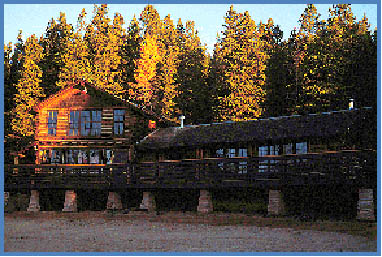B. Learn about the Yellowstone Supervolcano:
Analyzing eruptive history, seismic, or hydrothermal data
Individually, you will become knowledgeable about Yellowstone’s volcanic history, its earthquakes (“seismicity”) or hydrothermal activity and volcanic gases. Each of the topics has a presentation.
Materials
2. Graph paper or Excel/spreadsheet program
Procedure
1. Print off a copy of the Yellowstone NP map.
2. Watch the three presentations which describe the current and historical monitoring data at Yellowstone NP. Some slides will ask you to follow links to websites.
3. Record notes in your notebook as you follow along with the presentations., On the Yellowstone National Park Base Map you’ll want to draw locations of important information. This might be where big earthquakes occurred, hydrothermal vents, past lava flows, for instance. The notes and map coments will help you chose a location for the new research station. Make a key for your map similar to those you see on several of the slides. Consider making a draft copy of the map and then dress it up for a final clean copy.
3. Consider relevant questions pertaining to your project such as:
Volcanic eruption history data
* How often does the Yellowstone hot spot create a new caldera?
* What types of volcanic eruptions are associated with Yellowstone?
* How are these volcanic eruptions dangerous?
* Where are the areas most prone to hazardous eruptions?
* In your professional opinion, is there an immediate (next 100 years or so) danger related to volcanic eruptions at
Yellowstone?
Hydrothermal & volcanic gases activity data.
* In what way is hydrothermal activity dangerous?
* What gases are monitored at Yellowstone? In what way are these gases dangerous?
* Where are the areas that are most dangerous due to hydrothermal activity or gases that would keep you from
building a research station?
Seismic (earthquake) activity data
* How are earthquakes dangerous? How many modern day large (greater than magnitude 5) earthquakes have
occurred at Yellowstone?
* What is the most common magnitude of earthquakes recorded at Yellowstone?
* Does the pattern of earthquakes at Yellowstone suggest movement of magma? (Remember the pattern at Mount
St Helens.)
* Where would earthquakes most likely affect a research station?
C. Analysis
Now you get to assemble what you’ve learned and decide where you propose building a research station. Refer to your maps or use Google Earth to look at the data for each of the science topics you explored, eruption history, seismic activity, and hydrothermal activity. Consider all you've discovered during your research and put together a plan for your proposal.
D. Conclusions Making a Decision: Selecting a Site for the Research Station
Read the problem on the first page again. Using the data on your paper maps and the information you’ve discovered,decide the best place to build a five to ten acre research station. Keep in mind the practical considerations and safety issues.
E. Prepare Your Recommendations
For this project you will prepare a 2 to 3 page digital paper which will be turned into our Google Classroom: the paper should minimumly include following:
1. Restate the problem—remind the research group of what they are paying you to do.
2. Summarize your data—they don’t have expertise or time. That’s why they hired you. Explain to them what data you collected and what it means.
3. Make your recommendations—be specific as to where you think it is appropriate for research station to be. Be sure to include the a copy of the Yellowstone Map with the location of your proposed site noted.
4. Support your recommendations—explain why the spot you recommend is the best spot. Use specific details from your data. You should also describe any further data collection that you recommend.
5. Make your case in a conclusion by emphasizing the important points.
6. Be prepared to persuade your classmates that yours is the best site for the research station.
 * identify a good spot to build a scientific research station in Yellowstone National Park;
* identify a good spot to build a scientific research station in Yellowstone National Park; * interpret historical and real-time scientific data about volcanic activity in the park;
* interpret historical and real-time scientific data about volcanic activity in the park; * analyze the data to detect regions of high and low risk for volcanic hazards;
* analyze the data to detect regions of high and low risk for volcanic hazards; * define criteria for determining when the research station must be evacuated; and
* define criteria for determining when the research station must be evacuated; and  * communicate your findings.
* communicate your findings.